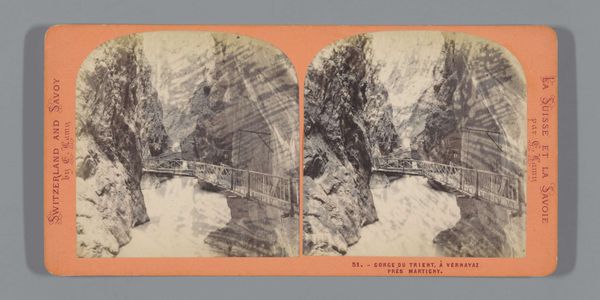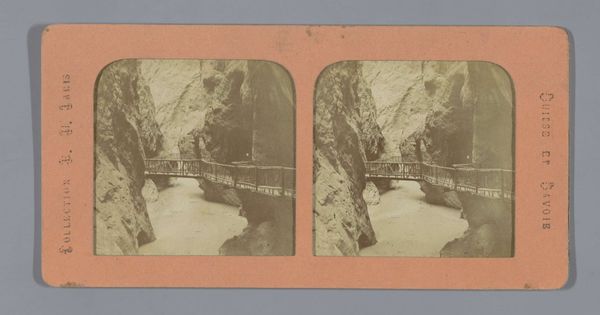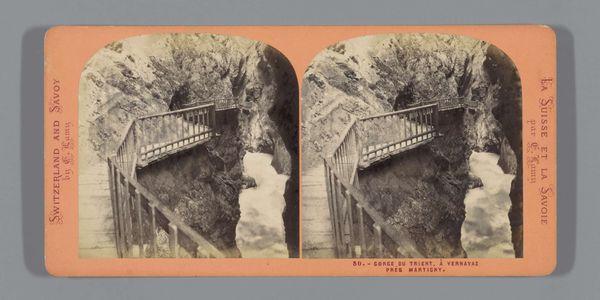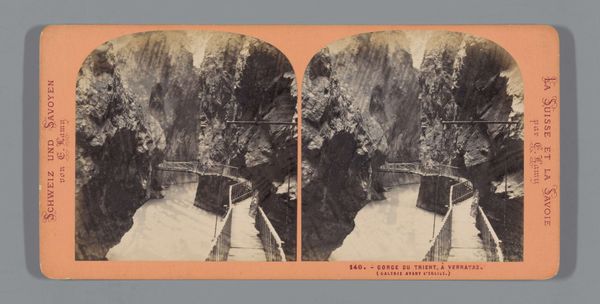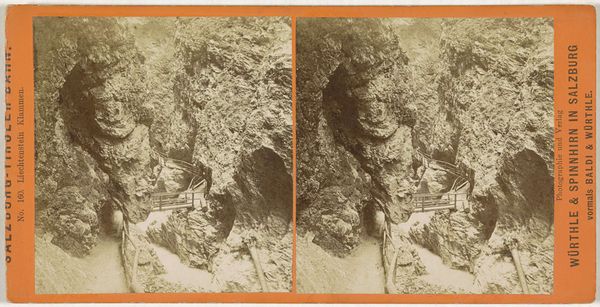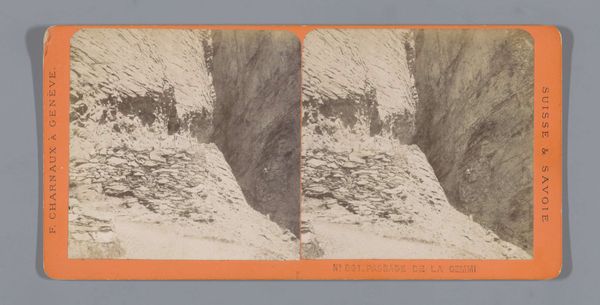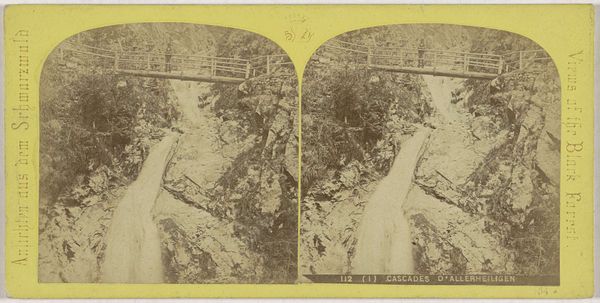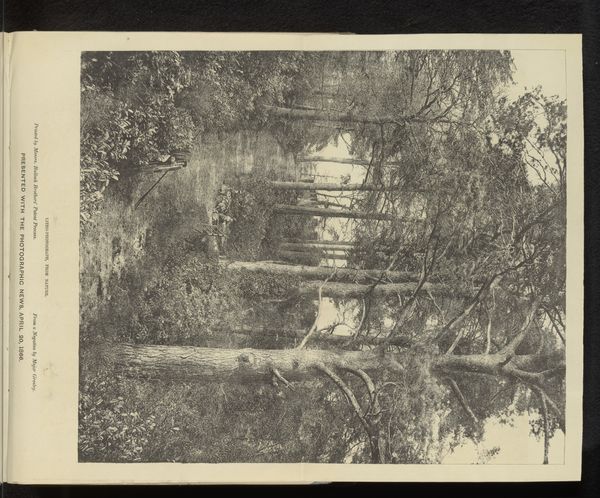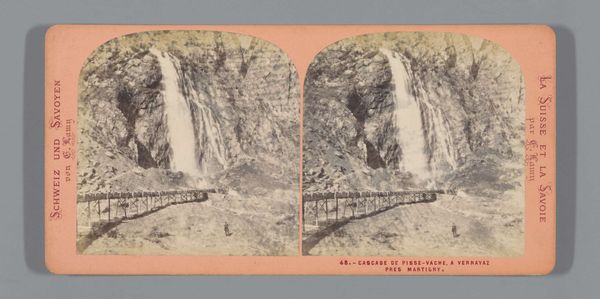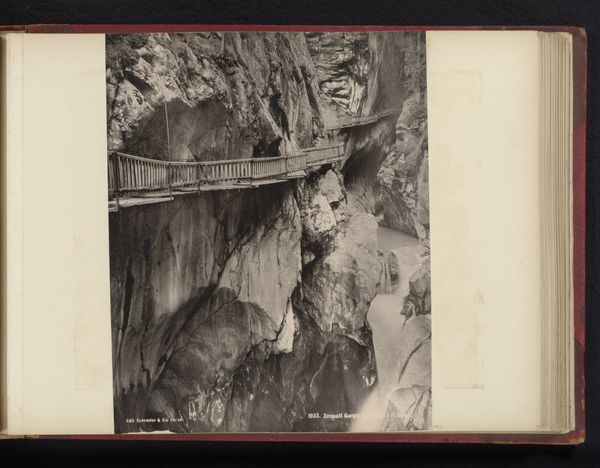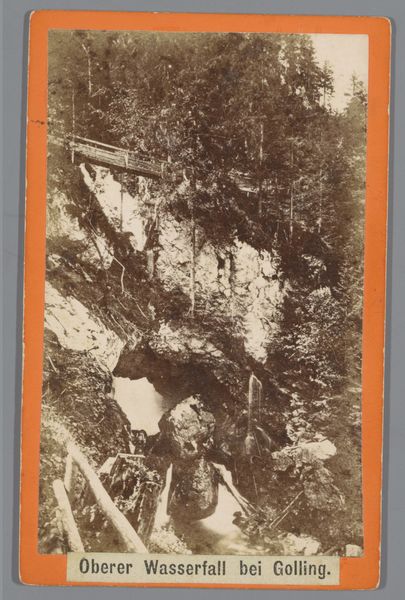
photography
#
water colours
#
landscape
#
photography
Dimensions: height 85 mm, width 170 mm
Copyright: Rijks Museum: Open Domain
Editor: So, we’re looking at a stereo photograph titled "Looppad langs de Gorges du Trient," likely from between 1860 and 1880 by Ernest Eléonor Pierre Lamy. It feels very stark; it depicts a narrow walkway clinging to the side of a rocky gorge. What is the story here? Curator: Well, stereo photography was hugely popular in the mid-19th century. It allowed people to experience places they might never physically visit. Switzerland, especially the Alps, was a major destination for wealthy tourists, but the difficult terrain wasn't accessible to everyone. Editor: So, it's like a Victorian-era virtual reality? Curator: In a sense, yes. Photography like this helped to shape public perception of Switzerland as a sublime, almost spiritual place. The carefully constructed walkways, like the one we see here, were both practical infrastructure for tourism and powerful symbols of humanity’s attempt to control and access nature. Look at how the perspective emphasizes the depth of the gorge - it plays on our fascination with the grand scale of the natural world. Editor: I never thought about the walkways themselves being symbolic. How were these images originally viewed? Curator: Using a stereoscope, a special viewer that combined the two nearly identical images to create a single three-dimensional picture. It became a popular parlor entertainment for the middle and upper classes. These photographs fed a desire for exploration and travel, contributing to the romanticized idea of landscapes. And, of course, the burgeoning tourist industry helped determine which images would become widely available. Editor: So, the image's availability says a lot about who it was intended for. Curator: Exactly. The distribution network created by the tourism boom dictated not just where one could go, but also how they perceived that landscape through popular imagery, and who could even gain access to this imagery. Editor: That's a really fascinating way to think about it; not just what's shown, but who got to see it and why. Thanks! Curator: My pleasure; looking at images through the lens of their social context always reveals so much.
Comments
No comments
Be the first to comment and join the conversation on the ultimate creative platform.

